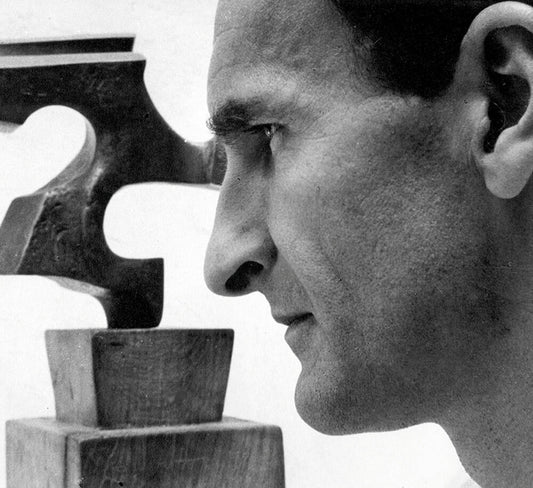Eduardo Chillida was born on January 10, 1924 in San Sebastián. His work is present in more than 20 museums around the world, and exhibitions have been held in cities such as Berlin, London and New York.
In 1943 he moved to Madrid to study Architecture, however in 1947 he decided to abandon his studies to start drawing at the Círculo de Bellas Artes. The following year, he went to Paris where he began sculpture, exhibiting a work at the Salon de Mayo. In 1951, after his wedding a year earlier with Pilar Belzunce, he settled in Hernani where he discovered iron, and made his first work in that material, Ilarik.
Three years later, his first individual exhibition took place in Madrid at the Clan Gallery and he began his public work with the doors of the Basilica of Aranzazu. In 1958 he received the Grand International Prize for Sculpture at the 29th Venice Biennale, a gateway to receiving almost all the existing awards throughout his life, from the Kandinsky Biennale in 1960, from Wilhelm Lehmbruck, 1966 to the German Kaissering in 1985. , from the Prince of Asturias in 1987 to the Imperial Prize of Japan in 1991.
The public work had great importance in his artistic career; he has more than 40 sculptures spread across different places around the world. In 1972 he created Meeting Place III, today on Paseo de la Castellana in Madrid, Campo Espacio de Paz for Lund (Sweden), or Praise of Architecture II in Palma de Mallorca. In 1973 the Stela for Pablo Neruda was placed in Tehran. 1976 is the year of the installation of the Comb of the Wind XV in San Sebastián.
During the 80s, the works followed one another: Gure Aitaren Etxea in Gernika 1984, Goethe's House in Frankfurt 1986, Elogio del Agua in Barcelona 1987, De Música in Dallas 1989, etc. In 1990 he made Praise of the Horizon in Gijón looking at the sea, at the unknown and two years later the sculpture Monument to Tolerance was inaugurated at the Muelle de la Sal in Seville. In 2000, the Chillida-Leku Museum was inaugurated, the place where much of his work currently rests in continuous dialogue with nature.
Eduardo Chillida died on August 19, 2002 in San Sebastián without seeing his great dream, the Tindaya project, a public work in the heart of the mountain, completed.

